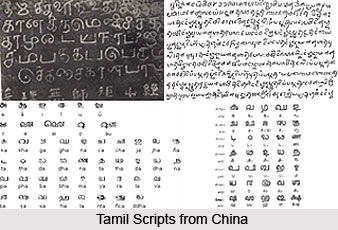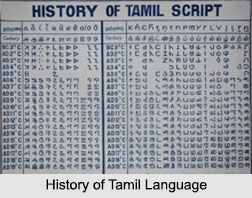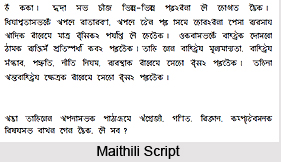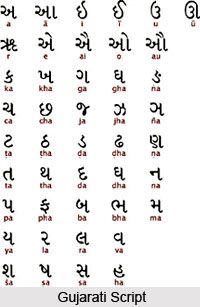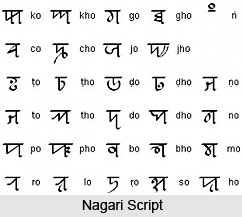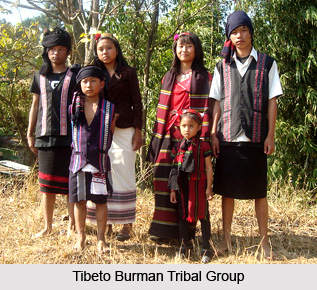 Tibeto Burman Tribal languages usually comprise eight major groups of languages. Nine languages of the Bodo sub-family of the Tibeto Burman language family constitute the largest group of tribal languages in the country. These major nine languages of this sub-family are Bodo, Garo, Tripuri, Mikir, Rabha, Dimasa, Lalung, Deori and Koch. These languages are spoken by over half of the tribal population spread in the Brahmaputra valley, N. Cachar Hills in Assam, Meghalaya and Tripura. And languages that are belonging to other sub-groups of the Tibeto Burman tribal language family are spoken by smaller number of populations. Like for instance, twenty four languages of Naga group forms 19 per cent in the states of Nagaland, Arunachal Pradesh and North Manipur Hills; twenty five languages of Kuki-Chin group forms 15 per cent in the states of Mizoram, Manipur and Tripura. Here the prominent languages are Lushai/Mizo, Thado. The Tibeto Burman tribal language family has been divided into three separate branches and these are Tibeto Himalayan, Assam Burmese and North Assam. Further, Tibetan and Himalayan groups are two of the major groups of this family.
Tibeto Burman Tribal languages usually comprise eight major groups of languages. Nine languages of the Bodo sub-family of the Tibeto Burman language family constitute the largest group of tribal languages in the country. These major nine languages of this sub-family are Bodo, Garo, Tripuri, Mikir, Rabha, Dimasa, Lalung, Deori and Koch. These languages are spoken by over half of the tribal population spread in the Brahmaputra valley, N. Cachar Hills in Assam, Meghalaya and Tripura. And languages that are belonging to other sub-groups of the Tibeto Burman tribal language family are spoken by smaller number of populations. Like for instance, twenty four languages of Naga group forms 19 per cent in the states of Nagaland, Arunachal Pradesh and North Manipur Hills; twenty five languages of Kuki-Chin group forms 15 per cent in the states of Mizoram, Manipur and Tripura. Here the prominent languages are Lushai/Mizo, Thado. The Tibeto Burman tribal language family has been divided into three separate branches and these are Tibeto Himalayan, Assam Burmese and North Assam. Further, Tibetan and Himalayan groups are two of the major groups of this family.
Moreover, Tibeto Burman tribal language family also includes 55 languages of NEFA group of Arunachal Pradesh and Northern Assam that form a total of 12 per cent; nine languages of Bhotia group forming two per cent, and 14 languages of Himalayan group forming two per cent. These tribal languages belonging to this particular family are spoken by tribal people extending to the central and western sub-Himalayan range (including Sikkim, West Bengal, Uttar Pradesh and Himachal Pradesh. Bodo group of languages belonging to the Tibeto Burman language family are spread over a vast area in Assam plains and extending up to the foothills of Arunachal Pradesh and Bhutan. At one time their use extended till South-East Bengal (now in Bangladesh). There is another variety of Bodo and Garo, known as Barish, that was used as a contact language among the tribal communities in Assam plains.
Among the tribal communities that belong to the Bodo ancestry, Garo speakers form the majority in four districts of the state of Meghalaya and Tripuri speakers along with their allied communities (Reang, Noatia, Jamatia) are concentrated in Tripura itself. With the continued exodus of Bengali population from East Pakistan since 1947 the share of Tripuri speaking population in Tripura is now shrunk from 41 percent to almost 23 per cent. Two other prominent tribal communities of the North-East, those belonging to the Naga group and to the Kuki-Chin group (Lushai/Mizo), have after a long-drawn agitation, succeeded in acquiring a degree of autonomy in the federal set up. But the most numerous tribe speaking Bodo, along with Mikir, and other allied languages like Rabha, Dimasa, Lalung, etc. in the same sub-family of the Tibeto Burman tribal language family constitute only five to six per cent of the total population in the entire state of Assam.
Many of the languages belonging to the Tibeto Burman tribal language family have been affected by the Indo Aryan languages and are restricted to the valleys only. However, Tibeto Burman tribal languages are spoken by huge tribal population of the country extending from Ladakh to north eastern region of the country. The mother tongues of this language group are spoken by a huge number of people and that is near about a million people of the country. The Tibeto Burman tribal language family is actually a sub family of the Sino Tibetan family of tribal languages.
Source: e-book on Languages of Tribal and Indigenous People of India
